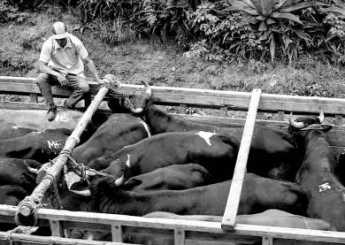Related Topics
Nature Preservation
Nature preservation and nature destruction are different parts of an eternal process.
Favorite Reflections
 In no particular order, here are the author's own favorites.
In no particular order, here are the author's own favorites.
Sanctuaria Mariposa
When they leave us, all the shad go to the Bay of Fundy. When Monarch butterflies leave us, they head for a thousand-acre spot in the mountains of Mexico, every single one. The butterfly performance is more remarkable since a butterfly can't make it from Philadelphia to Mexico City in one lifetime. The caterpillar that hatches in Pennsylvania knows where to go and somehow tells his grandchildren how to get there. Coming back North is somewhat easier; successive generations of butterflies follow the scent of milkweed plants, which is all they will eat.
This remarkable information was provided to us by the lifetime efforts of Professor Fred Urquhart of Toronto, with the volunteer help of the Girl Scouts. They tagged the insects, and other Girl Scouts reported back to headquarters whenever they found a tag or a tagged butterfly computer did the rest, and you better remember to thank them when they next offer to sell you some cookies.

|
| Mexico |
Your reporter found this information irresistible, and while on a trip to Mexico hired a car and driver to go look for the Sanctuary of the Butterflies. The first tip was that drivers were remarkably reluctant to go. Although every single Monarch butterfly in Eastern North America heads for an inactive volcano that is only forty miles West of Mexico City the second largest city in the world, the trip was said to be too far to go. The roads, they are bad, the car is old, the way it is not well marked, and several other things as well. Mexico being what it is, this implausible resistance was first viewed as a way to extract a higher fee for going there, but in fact, there was a genuine worry about banditos. What is more, the roads they were in fact bad, and the car was definitely old. Admittedly, that did not match up with driving one-handed at break-neck speed.

|
| Cattle |
When we reached a place where even Roberto could not drive the car further, we transferred to the back of a cattle truck, driven by Pedro, who also waved a cigarette with his free hand while we lurched and rattled up the mountain. At least he had one hand on the steering wheel, while we in the back of the truck had to clutch the wooden railing. Roberto had climbed into the back of the truck; he had decided he wanted to see these butterflies, too. It was hot when we started, so we wore T-shirts. But by the time the truck lurched to its final stop next to the souvenir shop, it was plenty cold. Butterflies seem to like it cold. What now? Now, you walk.
At fifteen (?) thousand feet, your feet feel glued to the rocks you are climbing, but the trees of the sanctuary are within sight. And it is well worth the climb to come to the six hundred acres on top of a mountain, where every Monarch butterfly on the continent is either present or trying to get there. Butterflies from Texas, butterflies from Winnipeg, and somewhere in that mass were butterflies from Philadelphia. The butterflies were three feet deep on the ground, and hanging in huge balls from the limbs of trees. They don't make much noise, possibly being too busy looking for the ideal mate from the personals columns. The local guide said the really remarkable sight is on a certain day in the spring, when they all take off at once, heading for home.
The sad news, unfortunately, is that the local Mexicans are cutting down the trees in the Sanctuary for the wood. We may soon see whether the butterflies go to some other hilltop, or whether we have seen the last of them.
Originally published: Friday, June 23, 2006; most-recently modified: Wednesday, June 05, 2019